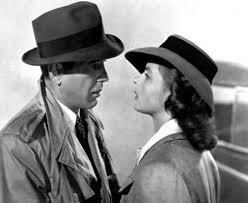The Villain Embodies the Counter-theme
If our hero’s object is to save the world, our villain’s object is to destroy it.

Conrad Veidt as Major Strasser in “Casablanca”
Whatever the protagonist wants, the antagonist wants the opposite.
But it’s a little more complicated than that.
Every story must have a theme.
It must be about something.
The theme, as Blake Snyder so helpfully declares in Save the Cat!, is the case that the story is making to the reader.
Better to sacrifice oneself (or one’s personal happiness) for the greater good than to live a life of prosperous selfishness.
Or
We are defined by our past and cannot escape it.
These are the themes of 1) Casablanca, and 2) Shane.
(Please note that themes do not have to be universally “true.” A great theme can be completely debatable, even spurious or “wrong.” It is enough, for storytelling purposes, that a theme be a strong statement about some aspect of life or the human condition.)
The hero embodies the theme.
Rick in Casablanca (Humphrey Bogart) declares in the first half of the story
I stick my neck out for no one
And
I’m the only cause I’m fighting for.
In the movie’s climax, however, it’s Bogey who’s putting Ilsa Lund, the love of his life (Ingrid Bergman), on the plane to Lisbon and freedom …

“We’ll always have Paris.” Bogey and Bergman in “Casablanca”
BOGEY
Inside of us, we both know you belong with Victor. You’re part of his work, the thing that keeps him going. If that plane leaves the ground and you’re not with him, you’ll regret it. Maybe not today. Maybe not tomorrow. But soon, and for the rest of your life …
while he himself heads off into the desert with his sometime adversary Captain Louis Renault (Claude Rains) to join the Free French and fight for freedom.
BOGEY
Louie, this is the start of a beautiful friendship.
The hero embodies by his words and actions the “case” that the movie is making. He is the personification of the theme, in this instance, as we said,
Better to sacrifice oneself (or one’s personal happiness) for the greater good than to live a life of prosperous selfishness.
But what about the villain?
The villain in Casablanca is the idea that there is such a thing as safe neutrality, that it is possible to sit out a conflict between good and evil without taking sides.
The city of Casablanca itself represents this, being at that time (1941) the capital of a nation that was neither Allied nor Axis.
Bogey’s cabaret—“Rick’s Cafe Americaine”—represents this same idea, a little Casablanca within the greater city of Casablanca.
Every character in Rick’s place is trying to work some self-interested angle, to escape the Nazis, to profit off others’ desperation to flee, or just to hang on and survive in this transient purgatory on the Mediterranean.
The physical villain, SS Major Strasser, represents the personal force of evil—the Nazi thugs whose aim is to arrest and no doubt torture and murder Ilsa and her husband, the valiant Resistance leader Victor Laszlo (Paul Henreid).
In other words, these elements constitute the counter-theme:
To defeat your enemies, make each of them reject solidarity with their fellows and instead strive only for their individual selfish ends.
When you and I as writers find ourselves struggling to make our stories vivid and compelling, it’s often because we haven’t truly defined the theme for ourselves and have failed to make 1) the hero embody the theme, and 2) the villain embody the counter-theme.
If we can lick these problems in our story, everything else will fall into place.



